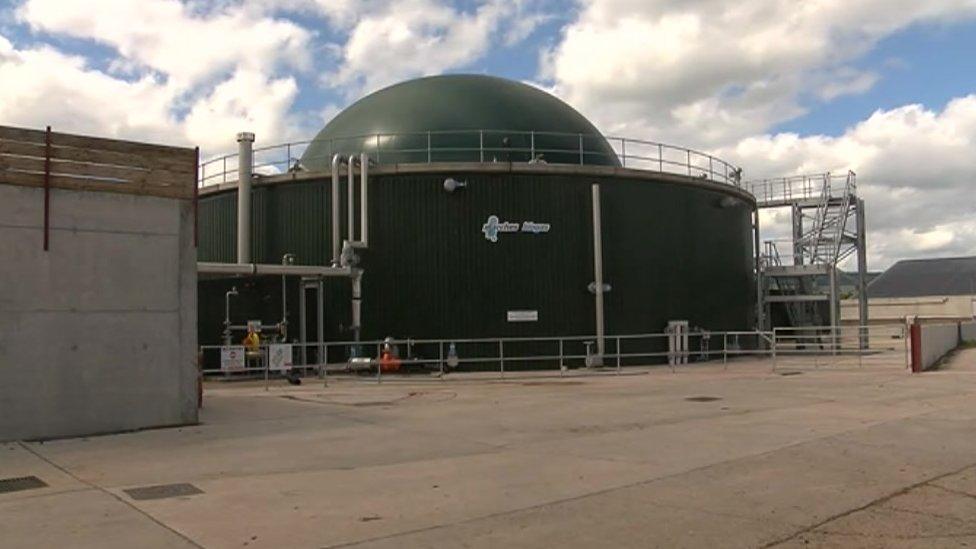Green energy plants planning concerns
- Published
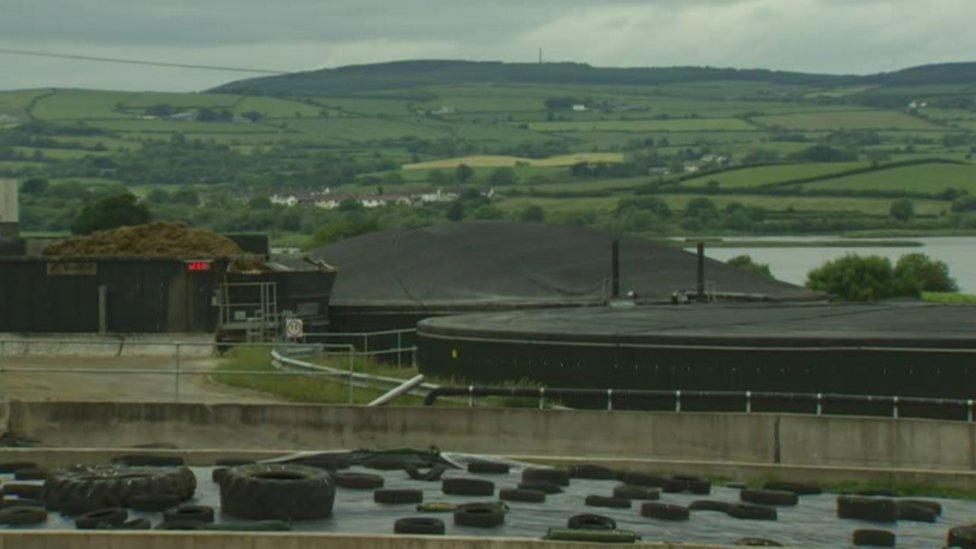
Anaerobic digesters like this one on the Pollock farm, convert organic material like manure and silage into electricity
Concerns have been raised about how planning was granted for a number of green energy plants on farms.
Anaerobic digesters can attract lucrative subsidies for 20 years, paid for from consumers' electricity bills.
But on several sites it appears they received approval either without necessary environmental checks, or were built in breach of their permission.
Development company Assured Energy LLP said it only got involved once planning permission was granted to landowners.

There are about 70 anaerobic digesters in Northern Ireland, many on farms
Anaerobic digesters use slurry and silage to generate methane gas, which is burned to generate electricity.
There are about 70 of them in Northern Ireland, many on farms. Assured Energy LLP (AEL) runs 10 of them.
The returns at each site can run to hundreds of thousands of pounds.
Dairy farmers Raymond Pollock Sr and Jr signed a contract with AEL, which was backed by a London-based venture capital firm based at Savile Row in London.
It paid for the construction and the family agreed to supply and run the plant for a management fee, while AEL collected the subsidies.
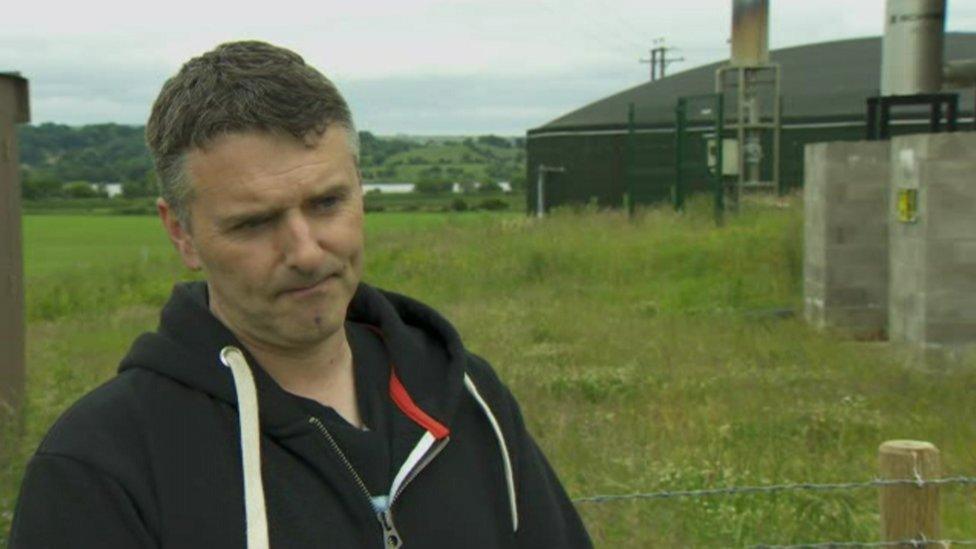
Raymond Pollock's family is locked in a legal dispute with development company AEL
After a decade, the plant and payments would revert to the Pollocks for the remaining 10 years of the 20-year subsidy deal.
But the situation turned sour when the parties clashed over the design and running of the plant, culminating in a civil action.
The Pollocks are now effectively locked out of the area of their farm they had leased to the company.
"We feel aggrieved that something that we have worked hard for several years to get off the ground, now basically we cannot partake of that and we will get no benefit out of it," said Mr Pollock Jnr.

What is anaerobic digestion?
Process by which micro-organisms break down biodegradable material in the absence of oxygen
Organic material such as manure, crops, grass or slurry is put into large containers
Once this material breaks down it produces biogas such as methane
Methane can be converted and fed into the National Grid

The Pollocks say important environmental checks were not carried out before planners gave the go-ahead for the plant, which is close to the River Foyle at Bready, near Strabane.
The Foyle is an EU-protected site. Planning advice say digesters must be at least 500m away or be assessed for their potential impact.
But the environmental assessments were never done, and the plant is just 250m from the river at its closest point.
The family is worried that they may be liable if there is a pollution incident because the development is in their name.
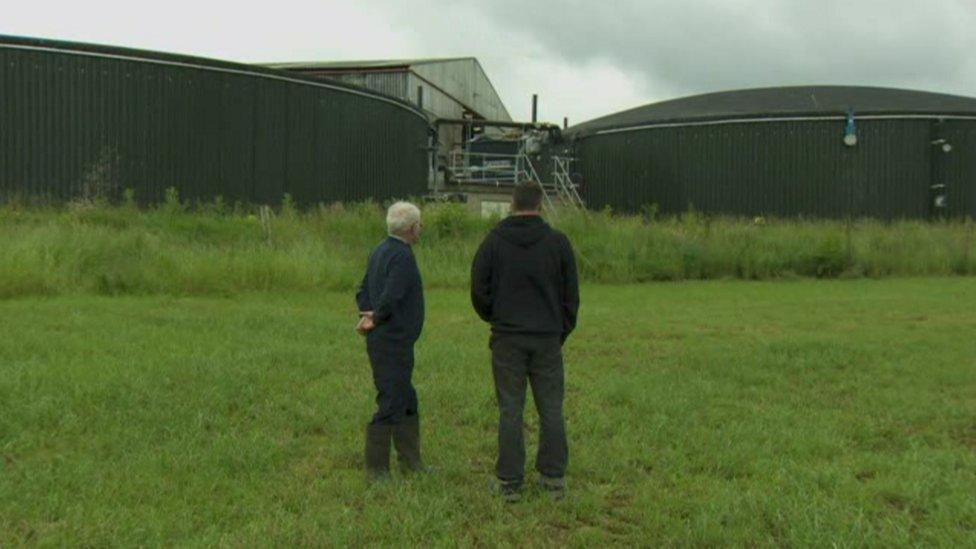
Raymond Pollock and his son are taking legal action against the firm that built an anaerobic digester on their farm
And they claim that there is insufficient protection to contain a major spillage as happened at a site in England in 2014, which suffered a catastrophic collapse.
The digester at Bready was approved by planners in the former Department of the Environment.
Derry and Strabane District Council now has the planning responsibility.
It says the proper environmental checks were not done and says there is no reason given in the planning file to explain why they were not.
Its enforcement officers are also investigating whether AEL has built sufficient secondary containment at the site to comply with the terms of the planning permission.
AEL said it only got involved with the Pollocks after they had secured planning permission.
It said the plant was compliant with the necessary rules and it was working to regularise any outstanding planning matters.
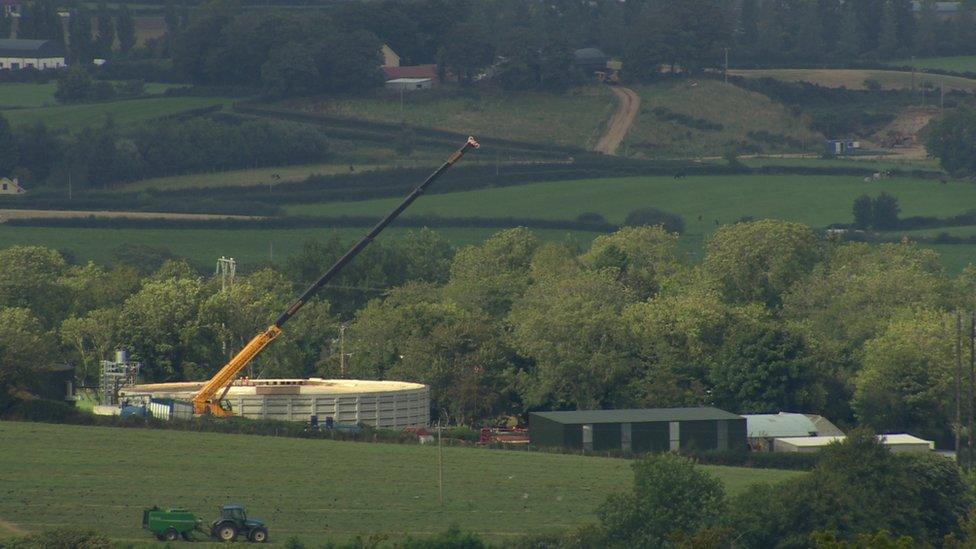
The digester at Baranailt Road outside Limavady
Concerns have also been raised about another site belonging to AEL, at Baranailt Road outside Limavady.
It received planning permission in 2012 but when it was built it was bigger and had extra bits that had not been approved.
Causeway Coast and Glens Borough Council ordered the company to remove the unauthorised development but it has appealed to the Planning Appeals Commission.
That means the enforcement order has no effect until the appeal is decided.
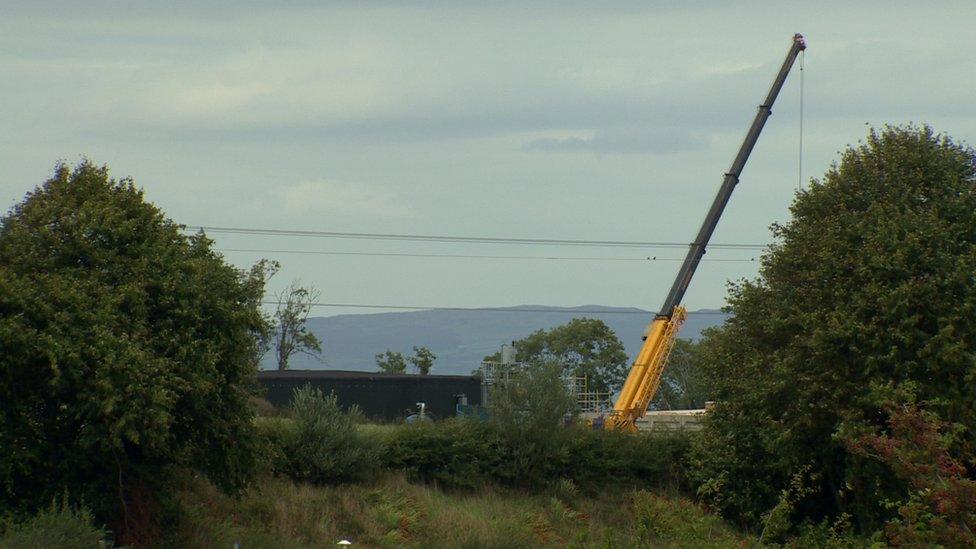
AEL says it got involved after planning permission had been secured
AEL said it only became involved after the original planning permission had been granted.
It said it had suggested a new planning application in 2017 to regularise the plant.
It added that the digester meets energy watchdog Ofgem's eligibility criteria for subsidy payments.
And it said as there was now an appeals process under way, it would be inappropriate to comment further.
- Published16 June 2017
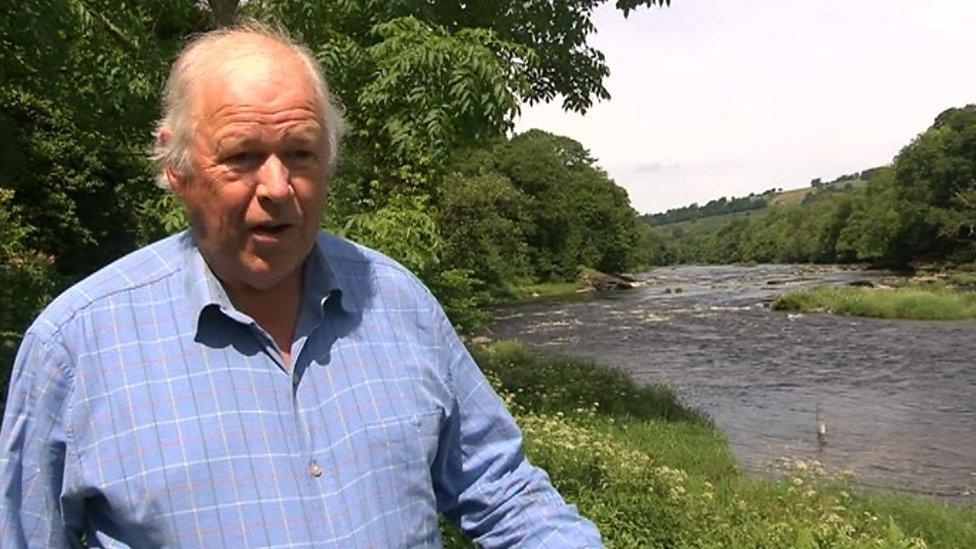
- Published16 June 2017
